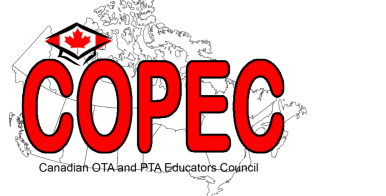Thinking of a career in the healthcare field? Do you have a desire to help others? Are you someone with good people skills and good communication skills? Are you creative at problem solving and a self-starter? Then this may be a career for you!

Occupational Therapist Assistants, or OTAs, work under the direction and supervision of licensed occupational therapists to deliver assigned occupational therapy services. They work with clients on a one-to-one basis or in groups, to engage these individuals in meaningful activities, focusing on compensatory or remedial treatment interventions to either learn or re-learn how to achieve optimal independence and reducing barriers to function.
Physical Therapist Assistants, or PTAs, work under the direction and supervision of licensed physical therapists to deliver assigned physiotherapy services. They also work with clients individually or in groups, focusing on the clients’ physical functioning. PTAs treat injuries that limit clients’ ability to move and perform various activities, working on their mobility and stability, improving strength and reducing pain, to restore function and prevent disability.
OTA & PTA is not a regulated profession. This means that a license is not required to work as a therapy assistant.
To get started
Step 1: Do some research to determine if this is the right healthcare field for you.
Links to get you started:
- Canadian Association of Occupational Therapists (CAOT) Resources for Students
- Canadian Physiotherapy Association (CPA) Becoming a PTA
- Practice Profile for Support Personnel in Occupational Therapy
- Essential Competency Profile for Physiotherapist Assistants in Canada
Step 2: Check if you meet the admissions criteria for the College of your choice (if not met – upgrade).
Step 3: Apply to the College that offers the OTA & PTA program.
Almost all publicly funded colleges and universities offer dual training and you graduate with an OTA & PTA diploma.
